The Prickly Truth: Can Cats Eat Pine Needles Safely? A Guide for Concerned Owners
- 24 Apr 2025 09:22
Cats, with their innate curiosity and playful nature, often investigate their surroundings with enthusiastic nibbles and chews. During the holiday season, or even just near pine trees outdoors, this curiosity might extend to pine needles scattered on the floor or dangling enticingly from branches. Witnessing this, concerned cat owners frequently ask the vital question: can cats eat pine needles? While they might seem like natural objects, the answer from veterinary experts is a resounding **no**. Pine needles, whether from Christmas trees or outdoor pines, pose several significant health risks to cats, ranging from mild irritation to potentially severe internal injuries. This comprehensive guide, aligned with EEAT standards (Expertise, Authoritativeness, Trustworthiness), will explore the specific dangers pine needles present to felines and explain why they should be kept well away from your curious kitty.
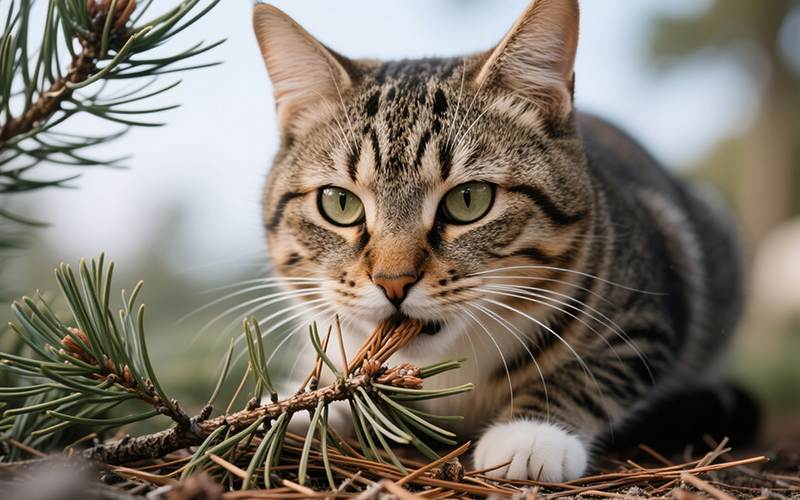
What Exactly Are Pine Needles?
Pine needles are the leaves of pine trees (genus *Pinus*). They are typically long, slender, and pointed, often bundled together in clusters. Their texture can range from relatively soft to quite stiff and sharp, depending on the species. Beyond their physical structure, pine needles contain various natural compounds, including:
Essential Oils (Terpenes): These volatile organic compounds give pine its characteristic scent. While pleasant to us, some terpenes can be irritating or even mildly toxic to cats if ingested in sufficient quantities, potentially causing stomach upset or, less commonly, affecting the nervous system or liver.
Resins/Sap: Sticky sap can be present on the needles.
Tannins: Compounds that can cause irritation.
It's also important to note that trees commonly used as Christmas trees, such as Firs (*Abies*) and Spruces (*Picea*), also have needles, although structurally different from true pines. However, the risks associated with sharp points, indigestibility, and essential oils apply to these needles as well. For the purpose of this discussion, "pine needles" will broadly encompass needles from common coniferous trees that cats might encounter. Critically, some trees sometimes mistaken for pines, like the **Yew** (*Taxus*), are extremely toxic in almost all parts, including the needles, and ingestion can be fatal.
Why Might a Cat Chew on Pine Needles?
Understanding *why* a cat might be tempted can help with prevention. Potential reasons include:
Curiosity: Especially kittens, exploring new textures and objects with their mouths.
Playfulness: Dangling needles on a tree can mimic prey or string, inviting batting and chewing.
Texture Appeal: Some cats might be drawn to the unique texture for chewing.
Boredom or Lack of Enrichment: Cats without sufficient stimulation may resort to chewing inappropriate items.
Pica: In some cases, chewing non-food items can be a sign of an underlying medical condition, nutritional deficiency, or compulsive behavior known as pica. If chewing inappropriate items is persistent, consult a veterinarian.
Regardless of the reason, chewing or ingesting pine needles is unsafe.
The Significant Dangers of Pine Needles for Cats
Allowing cats access to pine needles poses several serious health risks:
1. Physical Irritation and Injury
The sharp, stiff nature of many pine needles can cause direct physical harm:
Oral Irritation:** Needles can poke and irritate the sensitive tissues of the mouth, gums, and tongue, causing pain, drooling, and reluctance to eat.
Esophageal Damage:** Sharp needles can potentially scratch or puncture the esophagus as they are swallowed.
Gastrointestinal Tract Irritation:** The needles can physically irritate the lining of the stomach and intestines, leading to inflammation (gastritis or enteritis).
2. Gastrointestinal Upset
Even if they don't cause direct injury, pine needles are indigestible and irritating:
Vomiting:** The irritation to the stomach lining often triggers vomiting as the body tries to expel the foreign material.
Diarrhea:** Irritation further down the digestive tract can lead to diarrhea.
Abdominal Pain:** Inflammation and irritation can cause significant abdominal discomfort. Your cat might become sensitive to being touched on the belly, hunch over, or cry out.
Loss of Appetite:** Pain and nausea associated with G.I. upset often lead to a decreased or complete loss of appetite.
3. Risk of Obstruction or Perforation (Serious Danger)
This is one of the most severe potential consequences.
Intestinal Blockage:** Because pine needles are indigestible, they can clump together or individually become lodged in the narrow intestines of a cat. This creates a blockage, preventing the passage of food, water, and gas. An intestinal obstruction is a **life-threatening emergency** requiring immediate veterinary intervention, often surgery. Symptoms include persistent vomiting, severe lethargy, anorexia, abdominal pain, and inability to defecate.
Intestinal Perforation:** In rare but critical cases, a sharp needle could potentially puncture the wall of the stomach or intestine. This spills intestinal contents into the abdominal cavity, leading to a severe, often fatal infection called peritonitis. This is also a critical emergency.
The physical risk of obstruction or perforation makes answering "can cats eat pine needles?" with anything other than "no" irresponsible.
4. Potential Mild Toxicity from Essential Oils
While generally not considered highly poisonous in the way some plants are, the essential oils (terpenes) in pine needles can cause problems:
Gastrointestinal Irritation:** As mentioned, these oils contribute to vomiting and diarrhea.
Potential Liver Effects (High Doses):** While unlikely from ingesting just a few needles, consuming large quantities or concentrated pine oil products could potentially stress the liver, as cats lack certain liver enzymes needed to efficiently process some terpenes.
Neurological Signs (Rare, High Doses):** Extremely high ingestion levels could theoretically lead to mild neurological signs like lethargy or weakness, but this is uncommon from needle ingestion alone.
The primary danger remains physical, but the chemical components add to the irritation.
5. Pesticides and Preservatives (Especially Christmas Trees)
Trees, particularly those intended as Christmas trees, may have been treated with pesticides, fire retardants, or preservatives to keep them fresh longer. These chemicals can be toxic if ingested.
Are Some Pine Needles Safer Than Others?
While the exact composition of essential oils varies between species (Pine vs. Fir vs. Spruce), **all pose significant physical risks** (irritation, obstruction, perforation) due to their sharp, indigestible nature. None are considered safe for cats to eat. It's crucial to prevent access to all types of coniferous tree needles. Remember the **Yew tree (*Taxus* spp.)** is often mistaken for a type of pine but is extremely toxic. All parts of the Yew (except the fleshy red aril around the seed) contain taxines, cardiotoxic alkaloids that can cause sudden death from heart failure. Ensure any "pine" your cat has access to is not a Yew.
Related Dangers: Pine Sap and Tree Stand Water
Besides the needles, other parts of the tree environment can be hazardous: * **Pine Sap:** Can cause skin irritation if a cat gets it on their fur or paws. If ingested while grooming, it can cause mild digestive upset. It's also very difficult to remove from fur. * **Tree Stand Water (Christmas Trees):** This is a significant danger. The water can harbor bacteria as the tree decays. Worse, preservatives, pesticides, fertilizers, or fire retardants from the tree can leach into the water, creating a toxic brew that can cause severe poisoning if ingested by a cat. Always use a covered tree stand or prevent access to the water entirely.
Symptoms to Watch For If Ingestion Occurs
If you suspect your cat has chewed on or ingested pine needles, monitor them closely for any of the following signs: * Drooling excessively * Pawing at the mouth * Vomiting (may contain needle fragments) * Diarrhea * Loss of appetite or refusal to eat/drink * Lethargy, depression, hiding * Signs of abdominal pain (crying when picked up, hunched posture, reluctance to move) * Straining to defecate or absence of feces * Weakness or collapse (emergency sign)
Emergency Action: What to Do If Your Cat Eats Pine Needles
If you see your cat eating needles or suspect they have: 1. **Remove Your Cat:** Immediately move your cat away from the source of the needles. 2. **Remove Needles from Mouth:** If safe to do so and needles are visible in the mouth, gently try to remove them. Do not force your fingers deep into the throat. 3. **Assess the Situation:** Try to estimate how many needles might have been ingested and when. 4. **Contact Your Veterinarian or Emergency Pet Clinic IMMEDIATELY:** This is the most crucial step. Do not wait for symptoms to develop, especially if you suspect more than just a tiny nibble occurred. The risk of obstruction is serious. * Explain clearly: "My cat may have eaten pine needles." * Provide details: Estimated amount, time, type of tree (if known), current symptoms (if any), cat's details (age, weight, breed). 5. **Follow Veterinary Advice:** They will assess the risk based on the information. Recommendations might include: * Monitoring at home (only if ingestion was minimal and witnessed, and the vet deems risk low). * Bringing the cat in for examination. * Diagnostic tests like X-rays or ultrasound to check for needles or obstruction. * Treatment for symptoms (anti-nausea medication, fluids). * Hospitalization for observation or supportive care. * Emergency surgery if an obstruction is diagnosed. 6. **Do NOT Induce Vomiting at Home:** This can be dangerous with sharp objects like needles, potentially causing more damage on the way back up.
Quick Safety Summary: Pine Needles and Cats
This table summarizes the key risks:
| Risk Factor | Concern Level for Cats | Details & Recommendation |
| Physical Irritation/Injury (Sharp Needles) | High Risk | Can cause pain/damage to mouth, throat, stomach, intestines. Avoid. |
| Gastrointestinal Upset (Vomiting, Diarrhea) | High Risk | Caused by physical irritation and essential oils. Avoid. |
| Intestinal Obstruction/Perforation | VERY HIGH RISK / EMERGENCY | Indigestible needles can cause life-threatening blockage or puncture. **AVOID COMPLETELY.** Seek immediate vet care if suspected. |
| Essential Oils / Mild Toxicity | Low-Moderate Risk (dose dependent) | Contribute to G.I. upset; large amounts could potentially affect liver/nerves (uncommon from needles alone). Avoid. |
| Pesticides/Chemicals | Moderate Risk (esp. Christmas trees) | Chemical residues can cause poisoning. Avoid. |
| Tree Stand Water | High Risk / Potentially Toxic | Can contain bacteria, preservatives, pesticides, fertilizers. Prevent access. |
| Overall Answer to: Can cats eat pine needles? | NO. Pine needles (and needles from similar conifers) are unsafe due to risks of physical injury, G.I. upset, intestinal obstruction/perforation, and potential mild toxicity. Keep cats away from them. | |
Prevention: Keeping Your Cat Safe from Pine Needles
Since pine needles are unsafe, prevention is key: * **Supervision:** Supervise your cat closely around Christmas trees or areas with pine debris. * **Block Access:** Use pet gates, closed doors, or tree skirts/barriers to limit access to Christmas trees, especially the base. * **Secure the Tree:** Ensure Christmas trees are well-secured to prevent tipping, which can scatter needles and pose other injury risks. * **Clean Up Promptly:** Regularly sweep or vacuum up fallen needles indoors. Rake or clear needles from outdoor areas where your cat frequents, if possible. * **Cover Tree Stand Water:** Use a covered tree stand or create a barrier so your cat cannot drink the potentially toxic water. * **Provide Alternatives:** Offer plenty of safe chew toys, scratching posts, cat grass, and interactive playtime to satisfy your cat's natural instincts and prevent boredom-induced chewing. * **Consider Artificial Trees:** While some cats may still chew on artificial trees (which can also pose risks if pieces are ingested), they eliminate the problem of falling needles and contaminated water. Ensure the artificial tree is sturdy and doesn't have small, easily detachable parts.
Navigating Pet Safety Concerns with PettureX
Worrying about potential hazards like pine needles is part of responsible pet ownership. Having quick access to information can be helpful in managing these concerns. The **PettureX** app offers smart features for pet parents:
24/7 AI Veterinary Consultation: Get immediate, general answers to questions like "What are the signs of intestinal blockage in cats?" or "Is pine sap harmful?". Use the AI chat for quick information while deciding on next steps or preparing to call your vet. *Remember, AI provides general guidance and is not a substitute for professional veterinary care.*
Image Recognition for Pet Health:** Useful for identifying visual concerns, like skin irritation from sap, to discuss with your vet.
Animal Species Identification:** Helps identify plants in your home or yard, including potentially toxic ones like Yew trees.
PettureX can serve as a helpful resource, providing accessible information to support your efforts in keeping your pet safe alongside your veterinarian's expert care.
Safe Alternatives for Chewing and Enrichment
Redirect your cat's chewing and exploratory behaviors towards safe options: * **Cat Grass:** Offer commercially grown oat, wheat, or barley grass. * **Dental Chew Toys:** Toys specifically designed for cats to chew can help satisfy the urge and promote dental health. * **Silver Vine or Catnip Sticks:** Many cats enjoy chewing on these natural sticks. * **Interactive Play:** Engage your cat with wand toys, laser pointers (use responsibly), or puzzle feeders to provide mental and physical stimulation. * **Scratching Posts:** Provide various scratching surfaces (sisal, cardboard) to satisfy scratching instincts.
Conclusion: Keep Pine Needles and Paws Apart
To definitively answer the question "can cats eat pine needles?", the clear and safe answer is **no**. Pine needles pose significant risks to cats, including physical injury to the mouth and digestive tract, gastrointestinal upset, and the potential for life-threatening intestinal obstruction or perforation. The essential oils they contain add to the irritation, and external factors like pesticides or contaminated tree water present further dangers. Prioritize your cat's safety by diligently preventing access to pine needles, whether from indoor Christmas trees or outdoor sources. Provide plenty of safe enrichment and chewing alternatives. If you suspect your cat has ingested pine needles, contact your veterinarian immediately as a potential emergency. Understanding the dangers and taking preventive measures are key to ensuring your feline friend stays healthy and safe, free from the prickly problems pine needles can cause.
Related
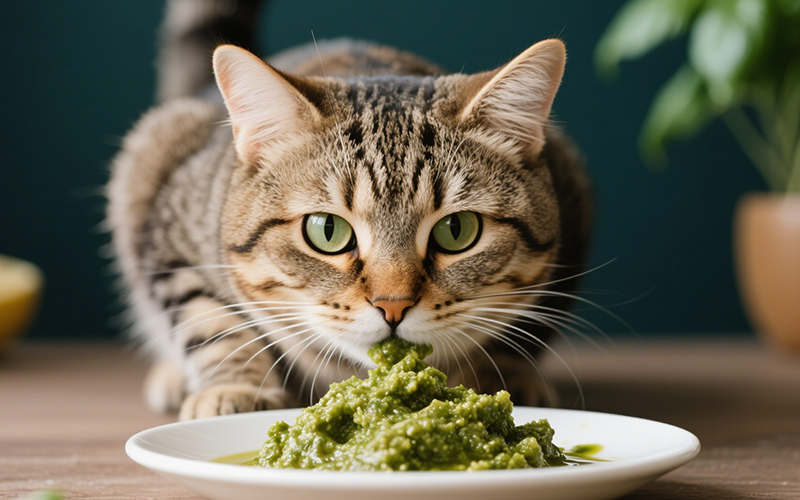
Pesto & Paws: A Dangerous Mix? Can Cats Eat Pesto Safely?
- 24 Apr 2025
Persimmons and Paws: Can Cats Safely Eat This Autumn Fruit? A Vet-Reviewed Guide
- 23 Apr 2025
Nutritional Yeast for Cats: Savory Sprinkle or Health Hazard? A Vet-Reviewed Guide
- 23 Apr 2025
Marshmallows and Cats: A Puffy Problem? Why Vets Say No to This Sugary Snack
- 22 Apr 2025
Kefir for Kitties? A Veterinarian-Reviewed Guide to Safety, Benefits & Risks
- 22 Apr 2025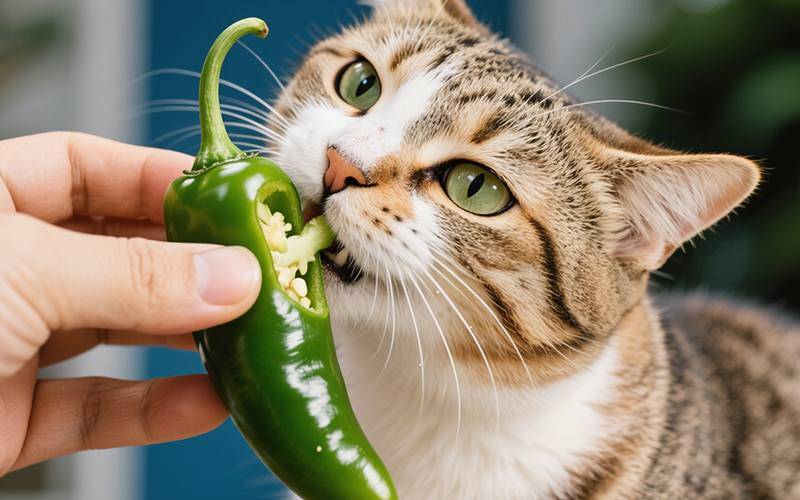
The Burning Question: Can Cats Eat Jalapenos? A Comprehensive Safety Guide
- 21 Apr 2025
Cool Temptation: Can Cats Eat Ice Cream Safely? The Vet-Backed Truth
- 21 Apr 2025
Frankly Dangerous: Can Cats Eat Hot Dogs? Vet Explains the Serious Risks
- 16 Apr 2025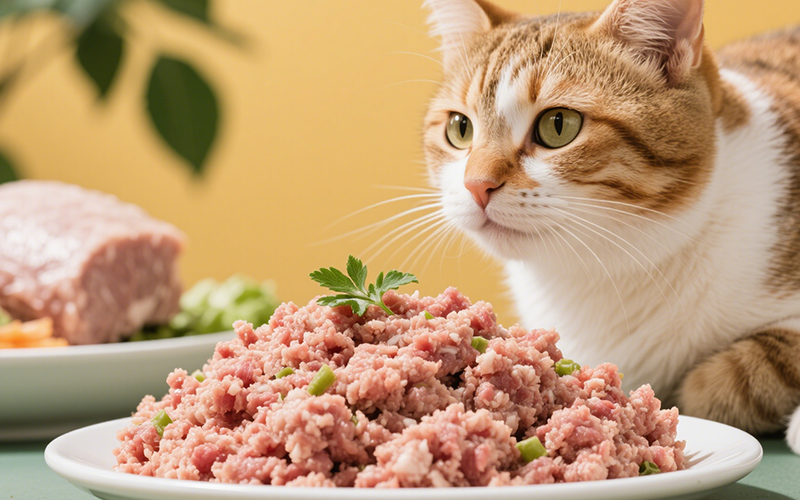
A Purrfect Protein? Can Cats Eat Ground Turkey Safely? (Vet-Reviewed Guide)
- 16 Apr 2025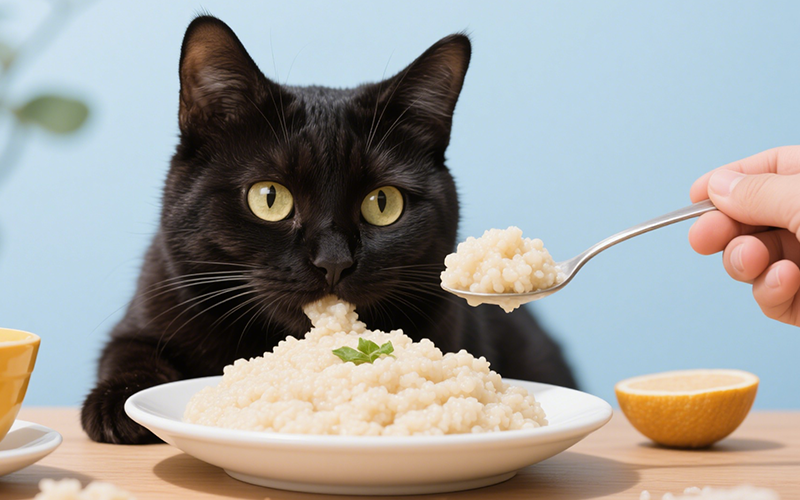
Gritty Situation: Can Cats Eat Grits Safely? Vet Explains the Risks
- 16 Apr 2025
